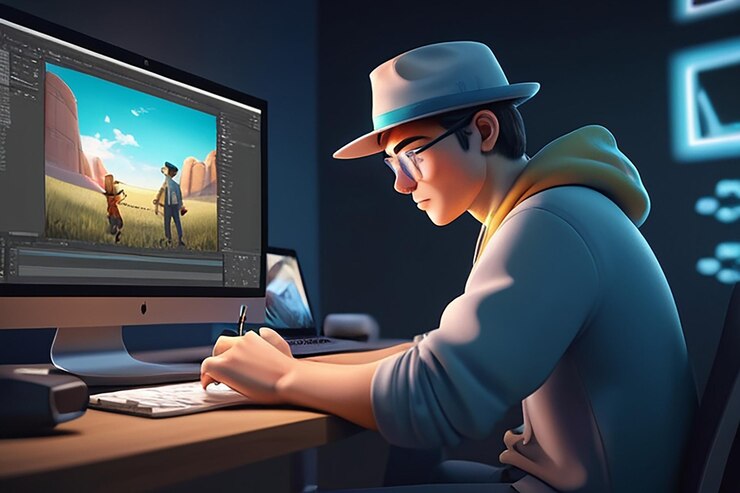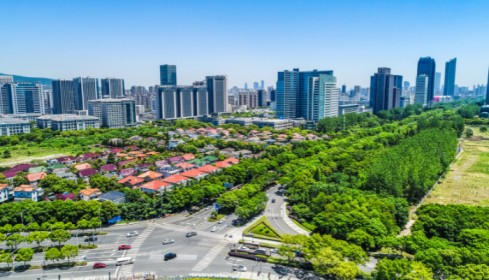In the dynamic world of 3D design, procedural animation stands out as a game-changer. It offers a level of complexity, scalability, and efficiency that traditional animation methods struggle to match. By leveraging algorithmic techniques, procedural animation has transformed how animators and designers bring their visions to life. This blog explores the pivotal role of procedural animation in 3D design, particularly in applications like 3D animated logos, while also examining its impact on industries centered in hubs like an animation studio in Hollywood.
What Is Procedural Animation?
Procedural animation involves the use of algorithms to automate the creation of movements and behaviors in 3D environments. Unlike traditional keyframe animation, where animators manually define each frame, procedural animation relies on mathematical rules, scripts, and simulations to produce dynamic results. This approach makes it particularly useful for creating complex, natural, or highly variable animations.
Key Characteristics of Procedural Animation:
- Scalability: Ideal for animating large systems or environments.
- Automation: Reduces the need for manual adjustments, saving time and effort.
- Realism: Simulates real-world physics, like gravity, wind, and collisions.
- Flexibility: Easily adaptable to different design needs.
The Impact of Procedural Animation on 3D Design
1. Efficiency and Scalability in Workflows
In 3D design projects, time is often of the essence. Procedural animation allows designers to create intricate movements without manually animating every element. This is especially beneficial for large-scale projects like cityscapes, ecosystems, or crowd simulations.
For example, when designing a 3D animated logo, procedural animation can be used to create dynamic particle effects, flowing transitions, or fluid simulations, all of which would be time-intensive to animate manually. The algorithmic nature of procedural animation ensures consistency while reducing production timelines.
2. Realism and Complexity
Procedural animation excels in creating realistic simulations. Whether it’s the motion of fabric, water, fire, or a flock of birds, algorithms can replicate these behaviors in a lifelike manner. This realism is critical in industries that demand visual perfection, such as Hollywood’s entertainment sector.
At an animation studio Hollywood, procedural techniques are used to create jaw-dropping special effects and realistic environments. For instance:
- Animating natural disasters in blockbuster movies.
- Creating lifelike character movements in animated films.
- Enhancing product advertisements with captivating visual effects.
3. Creative Freedom for Designers
Procedural animation frees designers from the constraints of manual animation. By automating repetitive tasks, animators can focus on the creative aspects of their projects. This is particularly advantageous in logo animation, where designers can experiment with various effects and transitions to make the brand identity pop.
For example:
- A 3D animated logo can feature particles that react to sound frequencies, creating a logo animation that dances to the rhythm of music.
- Procedural effects like fractals or noise can generate abstract designs that captivate audiences.
Procedural Animation in 3D Animated Logos
A 3D animated logo serves as a powerful branding tool, combining visual appeal with memorable motion. Procedural animation plays a crucial role in elevating the quality and creativity of these logos.
Benefits of Procedural Animation for 3D Animated Logos:
- Dynamic Visuals: Use procedural effects like waves, particles, or morphing shapes to create eye-catching designs.
- Interactivity: Incorporate real-time reactions, such as logos that respond to user interactions or environmental changes.
- Customizability: Easily adapt designs for different platforms, such as social media, TV, or web applications.
Examples of Procedural Techniques in Logo Animation:
- Particle Systems: Animating particles to form, disintegrate, or transform a logo.
- Physics-Based Effects: Simulating gravity, collisions, or fluid dynamics for realistic motion.
- Fractals and Noise Patterns: Generating abstract or organic shapes for unique designs.
Case Study: A Procedural 3D Logo for a Streaming Service
Imagine a streaming service logo animated using procedural techniques. As the logo appears, it could:
- Break apart into hundreds of particles.
- Reform seamlessly, creating a dynamic yet smooth transition.
- React to background music with synchronized movements.
This use of procedural animation would make the logo not only visually stunning but also memorable to viewers.
The Role of Procedural Animation in Animation Studios
Why Animation Studios Embrace Procedural Techniques
An animation studio in Hollywood operates at the intersection of creativity and technology. The high demand for innovative content drives these studios to adopt cutting-edge tools like procedural animation.
Advantages for Animation Studios:
- Reduced Costs: Automating repetitive tasks minimizes labor and accelerates production timelines.
- Adaptability: Procedural methods can be used across a wide range of projects, from films and advertisements to video games and virtual reality.
- Scalability: Studios can handle large-scale animations, such as crowd simulations or expansive environments, with ease.
Applications in Hollywood:
- Blockbuster Films: Creating realistic environments, explosions, and weather effects.
- Video Games: Enhancing gameplay with procedurally generated terrains and character behaviors.
- Advertising Campaigns: Developing high-impact, visually stunning ads for global brands.
Procedural Animation and Branding
For branding purposes, procedural animation enables studios to deliver visually consistent yet customizable content. A 3D animated logo created in Hollywood can stand out due to its unique procedural effects, which align with the brand’s identity while captivating its audience.
Challenges and Limitations of Procedural Animation
While procedural animation offers numerous advantages, it’s not without its challenges:
- Complex Learning Curve: Designers must have a deep understanding of algorithms, scripting, and physics.
- Computational Demands: Procedural techniques can be resource-intensive, requiring powerful hardware.
- Over-Reliance on Automation: Excessive automation may result in animations that feel less personalized or lack emotional depth.
The Future of Procedural Animation in 3D Design
The future of procedural animation is promising, with advancements in technology further enhancing its capabilities. As artificial intelligence (AI) and machine learning integrate with procedural techniques, we can expect:
- Smarter Simulations: AI-driven algorithms that adapt to user preferences or environmental inputs.
- Real-Time Animation: Enhanced capabilities for real-time procedural effects in interactive media like VR and AR.
- More Accessible Tools: User-friendly software that democratizes procedural animation for smaller studios and independent designers.
Conclusion
Procedural animation has revolutionized 3D design, offering unparalleled efficiency, realism, and creative possibilities. For 3D animated logos, it enables designers to craft dynamic, visually appealing animations that leave a lasting impression. In the entertainment industry, particularly at an animation studio in Hollywood, procedural animation is a cornerstone of innovation, driving the creation of stunning visuals for films, advertisements, and beyond.
As technology continues to evolve, procedural animation will undoubtedly play a central role in shaping the future of 3D design. Whether you’re a brand looking to create a standout logo or a studio aiming to push creative boundaries, embracing procedural animation is key to staying ahead in this competitive landscape.



